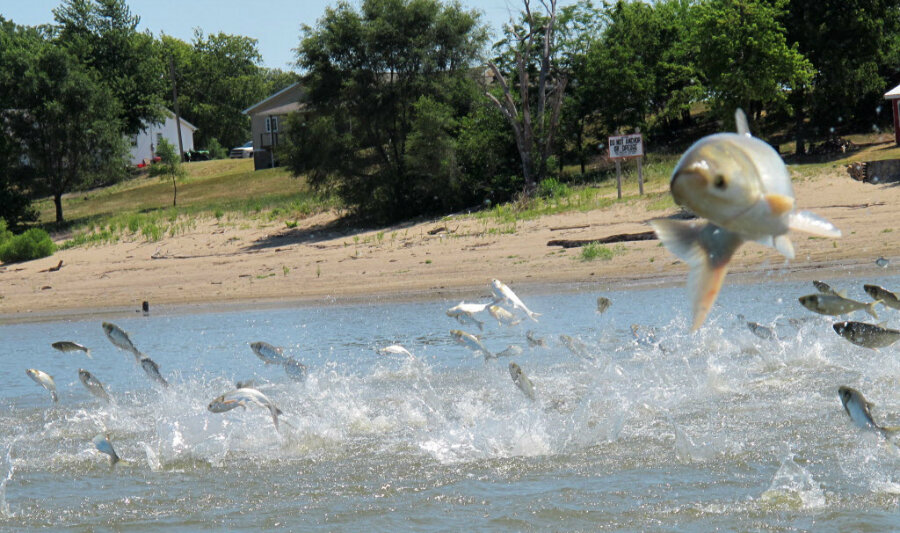Asian carp move closer to Lake Michigan: Solutions?
Loading...
Three electric fences.
That is all that is preventing the Asian carp from swimming into the Great Lakes, even as evidence shows the destructive fish are creeping closer to the world's largest body of freshwater, and as calls for the federal government to curb the spread of the invasive species have become as voracious as the fish's appetite.
Asian carp – a term that encompasses the Bighead, Black, Grass and Silver carp – pose a danger because of their effects on native species. Competition over food can wreak havoc on an ecosystem. The carp can grow up to seven feet and 110 pounds, eating up to 20 percent of its body weight each day.
The US Department of Agriculture says that of the four species, the Silver carp can cause particularly extensive damage, as it quickly breeds and branches out, feeding on plankton needed by larval fish and mussels.
Experts say those problems would carry over to the Great Lakes, home to a fishing industry worth an estimated $7 billion. The size of an Asian carp and its tendency to leap out of the water in large groups can also pose a danger to unsuspecting boaters.
Asian carp were first introduced in the 1970s to the United States, brought in to filter algae out of catfish ponds on Arkansas fish farms. By the 1990s, they had become a scourge, spreading through much of the Mississippi River watershed and beyond.
For years, politicians have been lamenting a lack of federal action to halt the spread of this invasive species. A hefty portion of the government’s attention has been focused on an area around a Chicago canal, one of the last lines of defense before entry into Lake Michigan and onto the Great Lakes.
The Detroit Free Press reported there are at least 13 other points of entry by which the fish could enter the lakes, many via wetland flooding.
The US Fish and Wildlife Service said early this month that the fish might also be pulled through the Chicago canal and its electric fences by boats and barges.
This week Michigan Sen. Debbie Stabenow (D) became the latest in a long line of politicians to urge immediate action to stop the Asian carp from spreading. Recent government reports show the fish has been found 12 miles closer to Lake Michigan than previously suspected.
“I remain extremely concerned that Asian carp are getting closer,” she told the Free Press. “Time is running out.”
For now it appears that new technologies or theories on how to stop the advancements of the carp may have slowed because of scant funding, industry influence, and Congressional inaction.
The Obama administration invested $200 million to study and fight the invasive species through the Asian Carp Control Strategy Framework. In 2014 the US Army Corps of Engineers' Great Lakes and Mississippi Interbasin Study presented options for dealing with the fish.
One proposal suggests separating the Mississippi River from Lake Michigan at a price tag of $18 billion and with a timeline of 25 years.
The Corps has also proposed using a combination of netting and poisoning the fish, at a much cheaper cost of $68 million.
Other options that are being explored included sound bubble strobe (Asian carp are especially sensitive to sound frequencies ranging from 750 to 1500 Hz) barriers and genetic engineering, which has been tried in Australia against European carp. Popular Mechanics reports:
The so-called "daughterless gene technology" takes advantage of the fact that in the embryo stage, female fish develop when the enzyme aromatase transforms androgen into estrogen. Scientists have identified the gene that creates aromatase and developed a blocker to neutralize it. Genetically engineered fish, robbed of the ability to produce the enzyme, could then be introduced to the natural population—subsequent generations would produce fewer and fewer females. But Lamer points out that eradicating carp from a river requires releasing a proportion of genetically modified fish equal to 0.5 or 1 percent of the overall population every year for 20 years. Ultimately, that would mean putting more than 1 billion new carp into the ecosystem.





